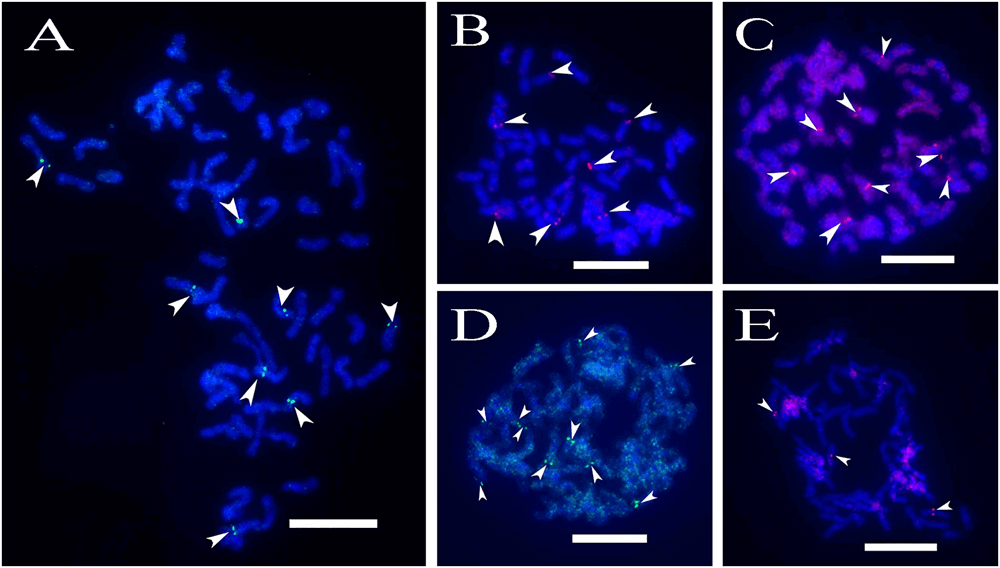BAC FISH Probe
As we all know, bacterial artificial chromosome (BAC) is a classic molecular genetics tool, and fluorescent in situ hybridization (FISH) probes derived from BAC are also very suitable for molecular cytogenetics research. FISH is commonly used to identify chromosomal aberrations, such as translocations, deletions, duplications, gene fusions, and aneuploidies. Various applications are possible, such as gene mapping, FISH banding, determination of chromosome breakpoints, characterization of derived chromosomes, the study of the interphase structure or karyotype evolution. The classic FISH experimental protocol relies on the hybridization of fluorescently labeled DNA probes to metaphase chromosomes or interphase cell nuclei. BAC is the most commonly used site-specific probe in FISH today. In the past ten years, commercial FISH probes based on BAC have occupied an important share in the FISH probe market. These probes are usually produced from DNA sequences cloned in BAC library. Cultivating a sufficient number of BACs for FISH can be a daunting task. Although the number of commercially available FISH probes continues to increase, there are still a large number of gene loci or chromosomal regions where commercial probes cannot be obtained. The purpose of our BAC FISH probe customization service is to help customers solve this problem.
 Fig 1. A case of using BAC-FISH to hybridize with chromosome-specific BAC clones. (Dong G, et al. 2018)
Fig 1. A case of using BAC-FISH to hybridize with chromosome-specific BAC clones. (Dong G, et al. 2018)
BAC Library Construction and FISH Probe Design Services
Most of the DNA fragments used as probes are extracted from the BAC library. The use of physically mapped BAC cloning accelerates the customization of breakpoint mapping and individual-specific probes. Our expert team will search the BAC library, scan the available sequence information, and compare to remove redundant fragments. According to the target region and label design selected by the customer, our BAC FISH probe customization can be selected to form region-specific probes, gene-specific probes, and region descriptions for specific chromosomal bands, entire chromosomes, or entire genomes Probe. After the sequence design is completed, the special probe supplier will synthesize the step at night, and directly label it by translation through the nick to incorporate different fluorophores (such as Cy3, Cy5, and Cy7). In particular, locus-specific probes include alpha repeats in the centromeric region and single-copy sequences in subtelomeres and gene regions. The process of this service can be briefly described as order submission, sequence design, synthesis and marking, internal QC, and order delivery.
Features of BAC FISH Probe
- Has a price advantage;
- After a lot of analysis and verification;
Creative Bioarray provides customized toxicants based on sequence-specific probes, region-specific probes, specific chromosome bands, whole chromosomes, or whole-genome region description probes based on the BAC library. This service uses a variety of bioinformatics tools such as sequence comparison to complete sequence design to help customers generate case-specific BAC probes. You will benefit from our in-house optimized design method to provide you with a cost-effective FISH probe customized solution. If you have BAC FISH probe customization service requirements, please contact us. We look forward to cooperating with you in the near future.
References
- Dong G, Shen J, Zhang Q, et al. Development and applications of chromosome-specific cytogenetic BAC-FISH probes in S. spontaneum[J]. Frontiers in plant science, 2018, 9: 218.
- Morrison L E, Ramakrishnan R, Ruffalo T M, et al. Labeling fluorescence in situ hybridization probes for genomic targets[M]//Molecular Cytogenetics. Humana Press, 2002: 21-40.
All products and services on this website are only suitable for non-medical purposes.


 Fig 1. A case of using BAC-FISH to hybridize with chromosome-specific BAC clones. (Dong G, et al. 2018)
Fig 1. A case of using BAC-FISH to hybridize with chromosome-specific BAC clones. (Dong G, et al. 2018)


